6.4 TCFD Disclosures
Chapter 6
Below you will find our TCFD Disclosures for governance, strategy, risk management, metrics and targets, physical risks, regulatory risks, market risk, technology risk and reputational risk.

Governance
Risk management
Strategy
Metrics and targets
Physical risks
- NRC Group’s operations are exposed to more extreme weather – both acute and long-term weather changes. Heavy snowfalls or in other cases less snow, more frequent storms, soil, mud race, flooding and increased air temperature will impact NRC Group’s operations in different ways e.g. increased temperatures leading to shorter time slots for welding (due to high air temperatures) causing higher costs or delays if not accounted for in tender pricing processes.
- For employee safety: No new risks and raising awareness in work processes.
- NRC Group owns few physical assets that may be damaged by extreme weather. However, the creosote facility in Finland may be impacted by more extreme weather like heavy rain or flooding. This could increase the risk of chemical spills. The probability of spills associated with the creosote facility is considered to be low.
- Other supply chain and logistics risks are considered low, as input factors are mostly local materials and client provided items.
Physical opportunities- More extreme weather can be an opportunity for NRC Group. In case of infrastructure breakdowns, additional reparation and construction work would be required and the demand for infrastructure services would likely increase.
- NRC Group’s operations are exposed to more extreme weather – both acute and long-term weather changes. Heavy snowfalls or in other cases less snow, more frequent storms, soil, mud race, flooding and increased air temperature will impact NRC Group’s operations in different ways e.g. increased temperatures leading to shorter time slots for welding (due to high air temperatures) causing higher costs or delays if not accounted for in tender pricing processes.
Regulatory risks
- The main regulatory risks are changes in requirements concerning emissions from fossil fuel, waste management and usage of materials (upcycling, recycling etc.) and potential increased costs if not planned/managed well. The regulatory requirements currently differ from country to country. This however is expected change through more widely adopted EU regulations.
- As imposed rules and regulations would likely be the same for all players in the market, NRC Group does not consider regulatory risk as high.
Regulatory opportunities
- Stricter GHG regulations will most likely move people and goods away from fossil fuel transportation over to low carbon solutions like railway and light rail.
- Political strategies and regulations of concentrating the population around “hubs” will also favour transportation by rail.
- The main regulatory risks are changes in requirements concerning emissions from fossil fuel, waste management and usage of materials (upcycling, recycling etc.) and potential increased costs if not planned/managed well. The regulatory requirements currently differ from country to country. This however is expected change through more widely adopted EU regulations.
Market risk
- Market risk in terms of demand for rail infrastructure is considered low. There is a political consensus in all the three countries that transportation of people and goods by rail needs to increase. This is reflected in the countries’ approved transportation plans. There is also a significant lag of rail infrastructure that needs to be upgraded.
- NRC Group does not expect a decrease in demand for railway services due to competition from electrical trucks nor electrical ferries.
- Market risk in terms of demand for civil constructions is also considered low. Civil constructions are still expected to play an important part in coming infrastructure projects.
- Lower financial cost could be expected for investments in equipment with zero emission.
Market opportunities- High demand for NRC Group’s key activities due to need for more resilient infrastructure and transition to a low carbon economy.
- Opportunity to attract green capital and impact investors.
- Several business opportunities related to physical climate change and the transition to a low-emission economy:
- Rehabilitation of smaller dams
- Electrification of harbour/terminal infrastructure
- 98% of the Group’s activities in 2023 in terms of revenue is estimated as eligible under the EU Taxonomy.
- Civil works for “green” buildings, and other green infrastructure as defined by EU Taxonomy.
- Market risk in terms of demand for rail infrastructure is considered low. There is a political consensus in all the three countries that transportation of people and goods by rail needs to increase. This is reflected in the countries’ approved transportation plans. There is also a significant lag of rail infrastructure that needs to be upgraded.
Technology risks
- The main technology risk for NRC Group concerns the machine park if public or private customers introduce requirements related to fossil free construction sites. Inability to keep up with emission free technology developments may in the future disqualify NRC Group from tenders or lead to losing tenders.
Technology opportunities
- Staying ahead of coming regulatory requirements, would be beneficial in tenders. I.e., having the ability to offer electric excavators.
Reputational risks
NRC Group develops infrastructure for low carbon transportation and reputational risk is considered low.
Reputational opportunities
- NRC Group will benefit from positioning the company as a provider of green solutions in terms of attracting talents and general goodwill.
